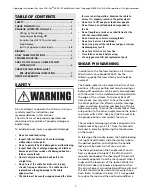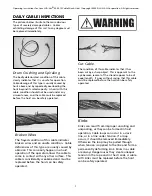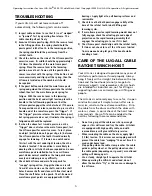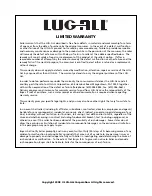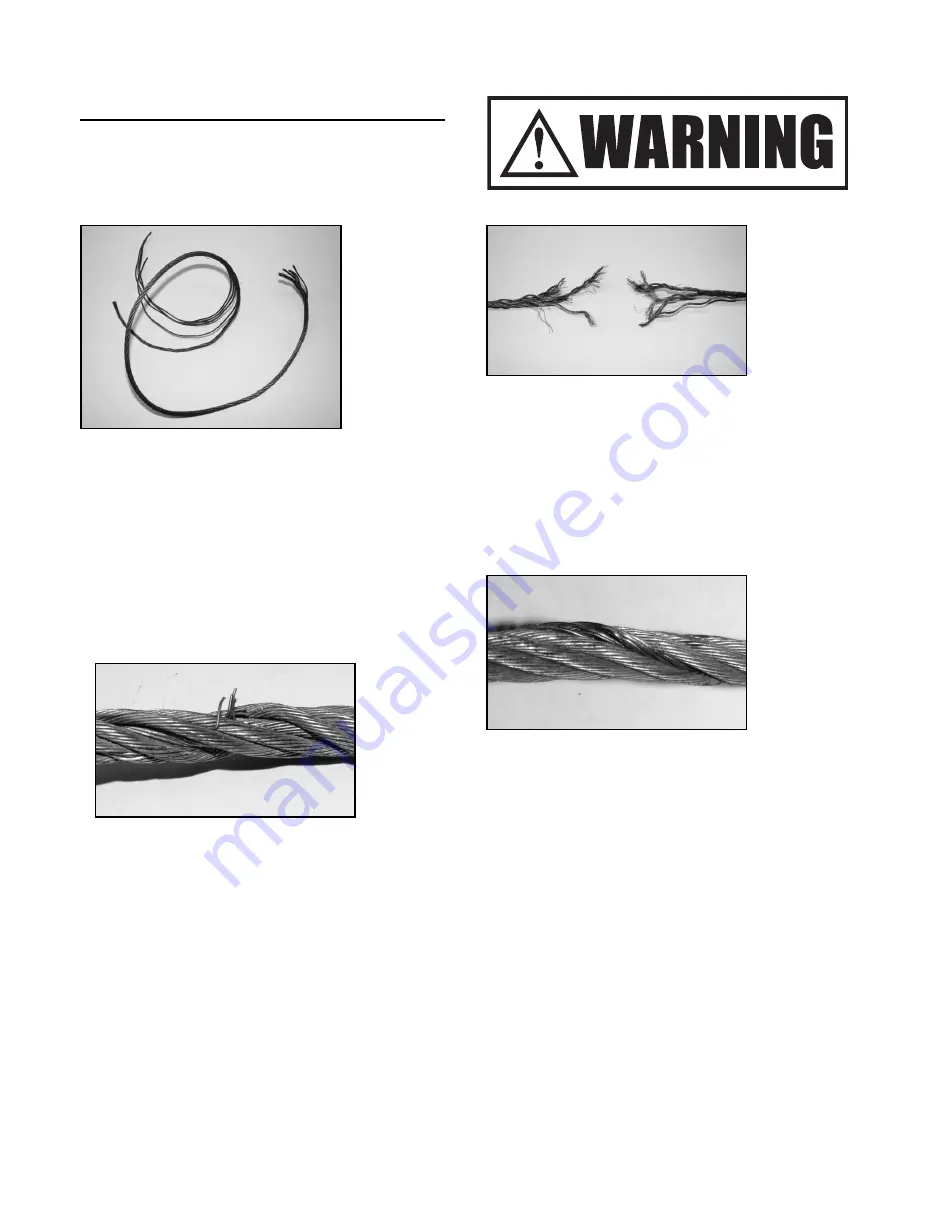
5
Broken Wires
The frayed condition of this cable indicates
broken wires and an unsafe condition. Cable
deficiencies of this type are usually caused by
abrasion. This can easily happen in a hoist
operation if the operator allows the cable to
come in contact with any other surface. This
cable is considerably weakened and must be
replaced before the hoist can be safely
operated.
Kinks
Kinks can result from improper uncoiling and
unspooling, or they can be formed in hoist
operation. Cable loops can occur in a slack
line, or in a line under tension. If a loop
occurs, it should be removed immediately.
Otherwise the loop may be pulled through
when tension is applied to the line and form a
permanently deforming kink. Kinks in a cable
are always dangerous as they create unequal
tension in the rope and in the strands. A cable
with kinks must be replaced before the hoist
can be safely operated.
DAILY CABLE INSPECTIONS
Drum Crushing and Spiraling
The badly deteriorated condition of this cable
clearly indicates that it is unsafe for operation.
Cable damage of this type is usually caused by
hoist abuse and by repeatedly overloading the
hoist beyond its rated capacity. A hoist with this
cable condition should not be used under any
circumstances, and the cable must be replaced
before the hoist can be safely operated.
Cut Cable
The condition of this cable indicates that it has
been cut by a sharp object. This is apparent to the
eye because several of the strands appear to be of
equal length. It goes without saying that this cable
must be replaced before the hoist can be safely
operated.
Operating Instructions For Your LUG-ALL® 6000-15 Cable Winch-Hoist / Copyright 2008 © LUG-ALL Corporation. All rights reserved.
The pictures below illustrate the more obvious
types of severely damaged cables. Cables
exhibiting damage of this sort to any degree must
be replaced immediately.


